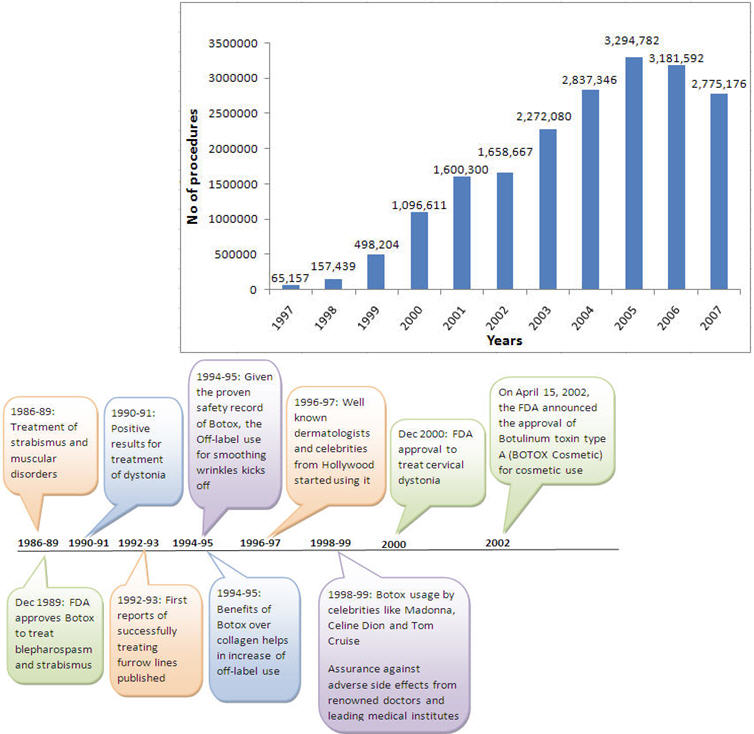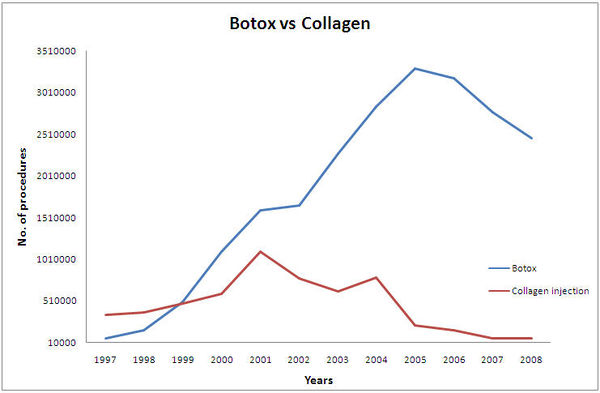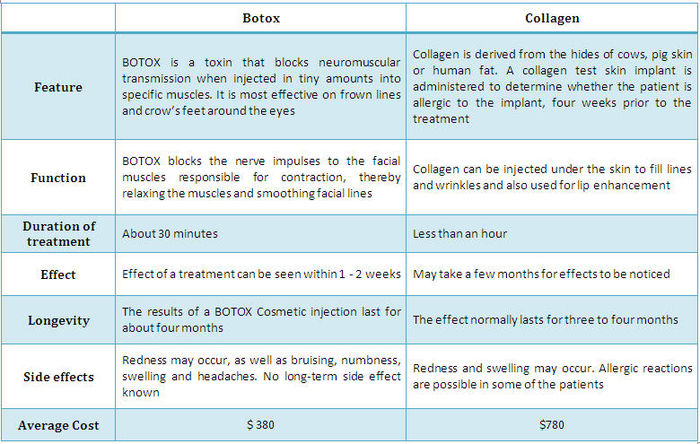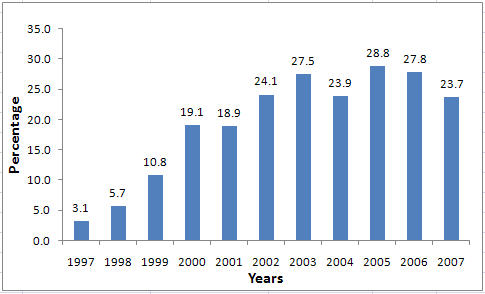Botox - from Medical Procedure to Household Word
Invasive medical procedures such as Botox are rapidly entering the consumer space. This report shows how Botox rapidly advanced from a medical procedure to a household word, and how other procedures -- such as nanotechnology-based or stem cell-based procedures -- can make the same transition in the years to come.
We conclude that three factors are essential for this transition:
- The most important factor is the readiness of technology, its proven effectiveness and safety
- The second factor is the expert buzz: Once the experts bless a new technology, its adoption accelerates remarkably
- The third factor is consumer buzz or word-of-mouth
We have modeled these factors for Botox and can provide the data for other emerging technologies as well, and thus predict their adoption.
| Year | Milestone |
|---|---|
| 1990 | Botox use for smoothing wrinkles discovered |
| 1994 | Off-label Botox usage starts |
| 1997 | Expert buzz picks up |
| 1998 | Consumer buzz intensifies |
| 1999 | Number of Botox procedures skyrockets |
Click here for more details on our methodology.
Contents
Dolcera approach
Botox - A Technical Overview
A Botox injection is a diluted form of botulinum toxin type A which is injected into facial muscles to paralyze or weaken the muscles that form wrinkles. Botulinum toxin is a medication and a neurotoxic protein produced by the bacterium Clostridium Botulinum. It is the most toxic protein known.
Botox is sold commercially under the brand names:
- BTXA, Dysport, Myobloc, Neurobloc and Xeomin which are used in the treatment of muscle spasms, and
- Botox Cosmetic and Vistabel are available for cosmetic treatment.
How a Botox Procedure is Performed
- A Botox procedure usually takes 5-15 minutes and there is no need for any anesthesia.
- The procedure is not entirely painless and the small needle does sting. Some physicians may numb the area with a topical anesthetic prior to the injection.
- Before the injections, all the sites are premarked and cleaned with an antiseptic solution.
- The Botox is then injected.
- It generally takes three to seven days to take full effect and it is best to avoid alcohol at least one week prior to treatment.
- Aspirin and anti-inflammatory medications should be stopped two weeks before treatment as well in order to reduce bruising.
- Once the procedure is performed results last anywhere from 4 to 6 months.
Botox Treatments
- Forehead lines
- Crow's feet (lines around the eye)
- Frown lines
Side effects of Botox
Botox is not without side effects. However, the side effects are minor and resolve rapidly. The most common side effects include:
- Mild nausea
- Flu like symptoms
- Headache
- Redness
- Pain at injection site
No severe side effects have been reported, but the dermatologist or medical practitioner administering Botox injection should be experienced.
Source: Articles.DirectoryM.com
Market Overview
Initially, Botox was marketed for its medical applications in treating various muscle-related conditions but later, its marketing was broadened to include its cosmetic application—smoothing out frown lines between the eyebrows.
Annual Sales of Botox Procedures
- Safety of Botox was proven through invasive muscular and neurological procedures very well by 1992.
- In 1990, a serendipitous discovery showed Botox effect on smoothing wrinkles.
- Consumer adoption happened through off label use (6 years before FDA approval for cosmetic use) due to expert buzz' and an existing demand for a wrinkle smoothing product (as shown from number of Collagen procedures that numbered 400,000 in 1997).
- Experts were willing to recommend/try Botox on their patients due to two factors: (A) Safety of Botox (in higher doses for invasive muscular and other disorders) and (B) It's proven discovery to smooth wrinkles.
- Suddenly, experts got a substitute for collagen procedures that took more a few months to show perceptible results (as shown below).
Procedures of Botox vs Collagen
Botox and collagen are both invasive procedures used for smoothing of wrinkles and facial lines. With the increase in off-label use and popularity of Botox, the market share of collagen has decreased.
Who Drove the Adoption?
Both experts and consumers did. Among the early adopters and supporters were the following:
- Dr Little injects himself with Botox, a good advertisement for both its safety and effectiveness
- Dr. Brin says tests on 60 patients show that the toxin can relieve furrowed brows, crow's feet and other deep wrinkles
- Researchers at the University of British Columbia have already used Botox to treat 18 patients with deep furrows in their foreheads
- Tracey Ross (Model/Actress): "I had deep groves in my forehead, and they're gone after Botox procedures"
- Madonna, Celine Dion, Kirstie Alley and Tom Cruise are all fans of Botox treatment.
- Dr Arnold Klein, who is Hollywood's king of collagen, said that latest beauty booster is an injection of Botox, the toxin that causes botulism, which gets rid of forehead furrows by simply paralyzing the facial muscles.
Expert Buzz
- In 1990, a serendipitous discovery was made by Mr. and Mrs. Carruthers, both medical practitioners, that Botox smoothed skin wrinkles.
- Alastair Carruthers, a dermatologist, published a seminal article on the cosmetic application of Botox in 1992.
- Till 1992, safety of Botox use in invasive procedures was proven. Botox had also won FDA approval for at least 3 invasive procedures by then.
- Between 1992 and 1997, 36 journal articles on the benefits of Botox for cosmetic procedures on skin were published.
- These articles were enough to create buzz in the 15,000 approx. strong community of Dermatologists in the USA.
Qualitative Analysis of Expert Buzz Articles
The expert articles were published in various leading journals including the American Academy of Neurology, Journal of Neurology, Neurosurgery & Psychiatry with Practical Neurology, and several more.
Consumer Buzz
- The below graph indicates the number of articles published on use of Botox for wrinkle smoothing over time.
Correlation Between Articles and Procedures
- We have co-related the number of articles published in media with the use of Botox and find a strong co-relation of 0.89.
- Despite a high co-relation, the number of 65,000 procedures of Botox through off-label used is hard to explain with the publication of in-total 58 consumer articles till 1997 (out of which 35 were published in 1997 alone).
- Botox being an invasive procedure requiring expert advice, we thought to understand if 'expert recommendations' was the cause for the high consumer adoption by 1997 (5 years before the FDA approval for cosmetic use of Botox)
Consumer Buzz - A Qualitative Analysis
- Doctors, Dermatologists, Surgeons, experts and consumers shared their experiences and gave positive reviews about the use of botox leading to initial buzz.
- Approx. 18 medical experts were quoted in media till 1997 (the inflection point) before the Botox Market took off in a big way. The experts quoted in media are listed here.
Major media Vehicles used are:
Expert Buzz vs Consumer Buzz
Conclusion
- For an invasive medical procedure on consumers involving nanotechnology or stem cell therapy, the first obstacle will be to prove its safety.
- Once the safety of the procedure is established, then its uptake can be modeled on existing customer base for other invasive procedures like Botox, collagen etc.
- Modeling on other invasive procedures is possible, since safety and efficacy of treatment are the biggest barriers to consumer adoption.
- The case of Botox classically shows that once safety of a procedure is proven, it is the experts that are driving the consumer adoption for the new therapy (for an existing well articulated need).
- However, for a completely new need that has never been articulated by the consumers (and hence never been met), expert buzz and 'consumer buzz will play an equally important role to drive consumer adoption.
- Timescale for building adoption curves will be a function of the amount of buzz created in expert and consumer circles over a period of time. Amount of buzz can be measured by the number of opinion leaders who drive the opinions through various media channels.
- Overall, until the inflection point for Botox, 36 unique journal articles were needed. For the consumer buzz, 58 unique articles published in 58 different vehicles were needed.










